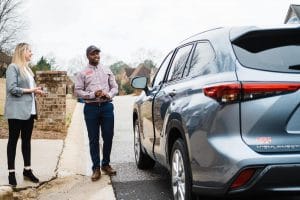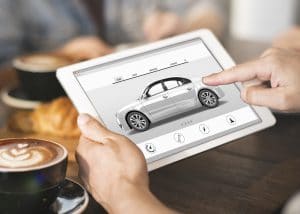Without question, the global pandemic has hampered the auto industry in innumerable ways, but it’s also acted as a catalyst to move dealers and automakers further into the digital age of retailing out of necessity.
Things such as online buying and working from home on a mass scale have the industry rethinking its business model. Many automakers have already said their taking a hard look at just how many employees they need to show up in person on a regular basis on their various campuses.
The buying experience has changed too, likely forever, but for certain the near future. Cars.com analysts sat down created a list of changes they see driving the industry in the second half of 2020, and maybe longer.
(Car sales losing momentum as COVID cases rise.)
Dealers are going to be digitally focused going forward. The website says prior to the pandemic 54% of dealers offered digital resources for shoppers. However, since they were forced to close their doors, many revamped their digital efforts. Cars.com’s Dealer Inspire saw a 250% increase in dealer inquiries for its Online Shopper.
By May, car sales through Online Shopper were up 63% compared to before the pandemic hit2. Ultimately, consumer expectations have changed as 71% of shoppers want to complete some, if not all, of a car purchase online.
If you’re going to shop and buy online, there’s no point in going to the dealership now so new vehicles will be delivered to the buyer’s home. Even before that, many dealers offered test drives with the vehicles being brought to the prospective buyer’s home. The site found that 30% of American car shoppers want their local dealerships to offer at-home test-driving, while 31% want dealers to deliver their car at home after the purchase.
Dealers are answering the bell on that front. In March, 45% offered home delivery; by April, that number rose to 67%. Additionally, Cars.com’s new Home Delivery and Virtual Appointment badges (to indicate which dealers offer these new services) reported more than 2 million vehicles were badged on its site by some 8,800 dealerships nationwide. And engagement levels grew, with a 32% increase in “saved vehicles” from consumers.
(Pandemic bailout headed off potential auto industry disaster, says retired FCA sales chief.)
The move to more online sales also increased the usage of artificial-intelligence chatbots to answer simple questions potential buyers may have prior to a real human needing to enter into the transaction. Month-over-month, online chat conversations between shoppers and dealers increased 23% in April and 38% in May.

Buyers are beginning to become more comfortable with getting their new vehicles delivered to their homes.
With more younger buyers rolling into the market on a regular basis, they’re proving to have different tastes than their older counterparts, giving fans of the four-door sedan plenty of hope for a future revival in the portfolios of automakers that have announced their demise. In fact, Cars.com reports that nearly 20% of consumers who previously did not own a car are considering purchasing one as many Americans are concerned about using public transit and ride-sharing services.
After years of declining interest in sedans, Cars.com witnessed an uptick in search activity: People searching for sedans increased 14 percentage points higher than the growth in overall search activity from April to June. Also, major metro hubs saw more significant growth in sedan activity than the rest of the country: New York City sedan searches were 41 percentage points higher, Chicago was 24 percentage points higher and Los Angeles was 4 percentage points higher than the overall increase in searches on the site.
While new vehicle sales have suffered in the U.S. since February, used car sales have seen an uptick, at least in terms of interest, according to the site. Part of that is because some popular new vehicles, like heavily contented pickup trucks were hard to find as incentives went way up as automakers looked to keep sales moving and production was shut down due to the pandemic, so no replacements arrived on dealer lots.
Between late March and late May, the share of searches for new vehicles decreased 3 percentage points while used-vehicle searches increased 4.5 percentage points. Until production fully rebounds and automakers can deliver a larger inventory of new cars, expect more shoppers to turn to used cars to fill the demand.
(Dealers need to get used to online sales, study sales.)
In turn, dealers can expect more opportunities to acquire used inventory outside of the traditional auction lane to beef up supply. Shoppers should also anticipate potential price increases on used vehicles as demand increases and inventory shrinks.


